The first production to come out of the Accelerator POD program – an initiative of Screen Canberra, Odin’s Eye Entertainment and The Film Distillery[1]Accelerator POD is a ‘market first’ development program run by Screen Canberra, international sales agent Odin’s Eye Entertainment and film studio The Film Distillery; filmmakers whose scripts are deemed commercially viable by Odin’s Eye are given the opportunity to work with The Film Distillery. See ‘Feature Film Produced by Canberra’s The Film Distillery Starts Production’, media release, The Film Distillery, 10 April 2018, available at <https://www.medianet.com.au/releases/157743/>, accessed 18 October 2019. – The Furies (2019) is a brutal, relentlessly paced slasher-horror film. Inspired by both Richard Connell’s famed 1924 hunter-becomes-the-hunted short story ‘The Most Dangerous Game’ and the titular female figures from Greek mythology, it unflinchingly depicts acts of violence against women, but is ultimately a slap in the face to toxic patriarchal control.
I speak to writer/director Tony D’Aquino as well as producers Andrew Marriott and Lisa Shaunessy about fulfilling the genre audience’s expectations for thrills and explicit kills while addressing the thorny subject of misogyny in the age of the #MeToo movement.
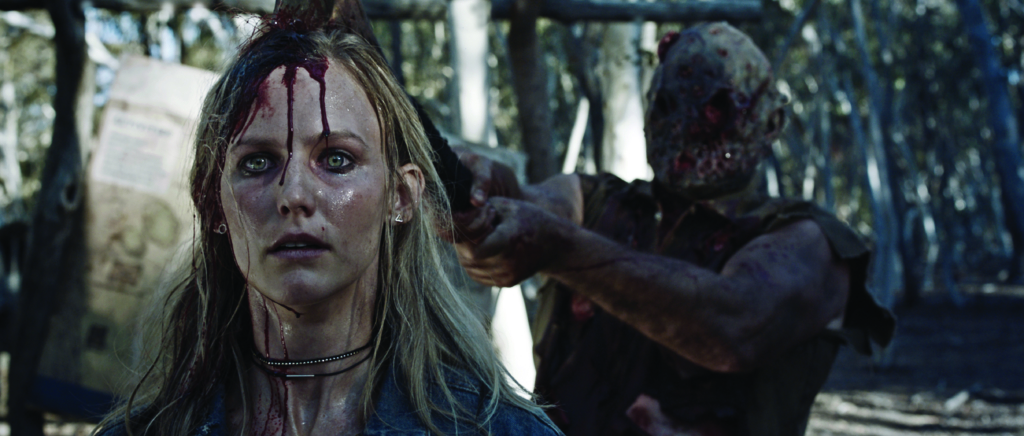
Oliver Pfeiffer: What do you think made The Furies stand out among all the other submissions to the Accelerator POD?
Andrew Marriott: The Accelerator POD has to balance a number of factors when deciding which projects to progress. In the case of The Furies, it stood out due to a well-developed and realisable story, and the absolute enthusiasm and devotion of [its] writer and director, Tony D’Aquino. It was clever, different and developed in a way that allowed us to produce high-quality cinema with a very modest budget.
Lisa Shaunessy: I love the horror genre and I hadn’t had an opportunity to work on a film that involved the use of so much prosthetics and in-camera effects, so that was definitely part of the excitement of getting involved with The Furies and working with our prosthetics and make-up teams, led by Larry Van Duynhoven and Helen Magelaki, who are total legends. I also liked that Tony had written a script that plays to all the tropes of the genre but puts the lead, Kayla [Airlie Dodds], in a position of power at the end, when often the antagonist has the last word in these kinds of films.
The Furies is, fundamentally, about toxic patriarchy and women fighting back – very topical themes at the moment, with #MeToo having gained such momentum. Do you feel this is the type of film we need to see more of right now?
LS: The social narrative is definitely changing and, frankly, I’m sure it’s refreshing for everyone to see new stories, new protagonists and new heroes on screen. Tony wanted to make a movie that was about the women winning in the end and, of course, I applaud him for that! It turns out we can be tough cookies when put to the test and not the vulnerable damsels in distress that we’ve often been depicted as in the past.
What are some of your favourite horror films that hit the mark, from a pro-female perspective?
LS: I think there have been quite a few in the past few years. I was a producer on another horror [title] that had a tough female at its centre called Killing Ground [Damien Power, 2016], and you don’t have to look far for other brilliant examples: Bird Box [Susanne Bier, 2018], A Quiet Place [John Krasinski, 2018], Hereditary [Ari Aster, 2018]. I’m looking forward to seeing Jordan Peele’s Us [2019] as well. I think we all love having the opportunity to see complex women on screen, and horror is a great genre to explore this. When the key emotion is fear, we get to explore how women really respond when faced with the unthinkable.
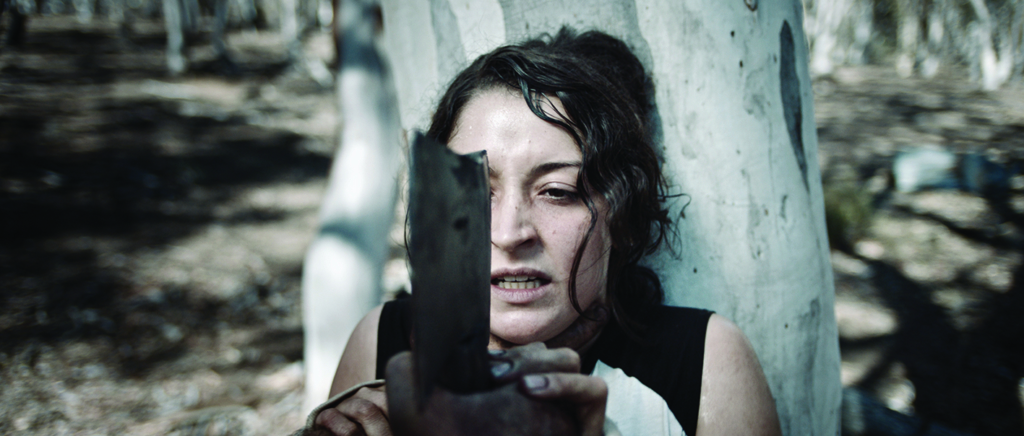
You’ve created what is essentially a slasher-horror movie, albeit with notes of Richard Connell’s ‘The Most Dangerous Game’ and Greek mythology. What did you hope to achieve in amalgamating these stories?
Tony D’Aquino: I grew up watching a lot of classic movies in the 1970s and 1980s and a lot of exploitation films, so I kind of wanted to capture the relentless, slightly anarchic vibe those films have, where anything can happen. So [the question] was: how could I make a slasher a little bit different than [just having] the ‘Final Girl’[2]‘The ‘Final Girl’ refers to the female character who, in cinematic works of horror, survives to the end of the film and confronts the antagonist; see Carol J Clover, Men, Women, and Chain Saws: Gender in the Modern Horror Film, Princeton University Press, Princeton, 1992. trope? What if you had a bunch of Final Girls and the killers trapped [and] fighting together? How would that play out? That was kind of the spark for the story.
It’s certainly a nihilistic nightmare, and viewers aren’t initially told anything about how these characters landed in their predicament.
TD: I wanted the film to start very quickly because, in my writing, I guess I get bored quite quickly – and so it’s ‘Let’s go! Let’s get moving!’ with things explained along the way. Also, I’m interested in films that combine several genres, so [there’s] a bit of science fiction and a bit of slasher – just mixing them up and seeing what happens.
‘The film is … about the end result of misogyny and voyeurism. It’s the idea of women being controlled and used as objects, and The Furies forces the audience to empathise with these women. It’s a nightmarish reflection of society.’
—Tony D’Aquino
The Furies features female characters fighting off monstrous men in masks. What was your aim in presenting the audience with this horrific scenario?
TD: The film is […] about the end result of misogyny and voyeurism. It’s the idea of women being controlled and used as objects, and The Furies forces the audience to empathise with these women. It’s a nightmarish reflection of society. It’s also about female vengeance and how it comes out of the death of other women.
You don’t hold back on the brutality – the film has many eye-opening moments of gore. Is this something you feel is necessary to satisfy the genre audience?
TD: It is a requirement for the genre, and people do look for that if you’ve got a slasher film. I do love to see a good gory effect, and I specifically wanted to do old-school practical effects rather than CGI. What I liked about those 1970s and 1980s films was how all the effects were practical. I believe the imperfections of a practical effect have a reality to them – as opposed to CGI, which can be a little too perfect. The little mistakes and little imperfections add to it and give it texture and weight, so I wanted to be able to do that. It is an extreme horror film and it is, of course, not for everybody, [but] I didn’t feel the need to hold back because, yes, I am making it for that very specific audience.
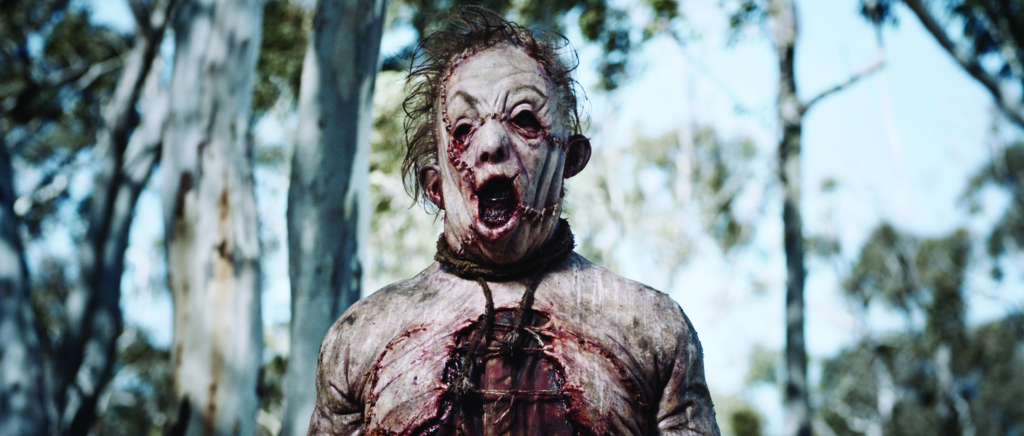
Your horror film defies convention in that it is set predominantly during the day. Was this always your intention and, if so, what led you to this decision?
TD: It was always my intention. My favourite horror film is The Texas Chain Saw Massacre [Tobe Hooper, 1974] and I love that so much of that film takes place in stark, brutal daylight. That creates quite a menacing atmosphere: the fact that you can see everything [and] nothing’s hiding in the shadows, but you can still die at any moment. There is no safety in the daylight, which is a nice contrast to most horror films. Also, shooting in daylight really highlighted the unique location we were shooting in: that endless forest of ghost gums that starts to look like bleached, twisted bones.
Were there any challenges to shooting in daylight?
LS: I think all the cast and crew loved it! It did mean we couldn’t hide as much as you might be able to in darkness – [things] such as blood tubes and prosthetics popping out of costumes unexpectedly – but at least we could all see what we were doing and didn’t have to crawl our way through weeks of night shoots, which can be really tough. It also gave our cinematographer, Garry Richards,[3]Notably, Richards also lensed Mark Hartley’s 2013 remake of Richard Franklin’s Ozploitation horror classic Patrick (1978). some scope with the beautiful landscape and harsh Australian sunlight to redefine ‘eerie’. The location we shot in was an abandoned tourist village, and it was eerie enough in broad daylight; I’m not sure any of us would have liked to have been there at night!
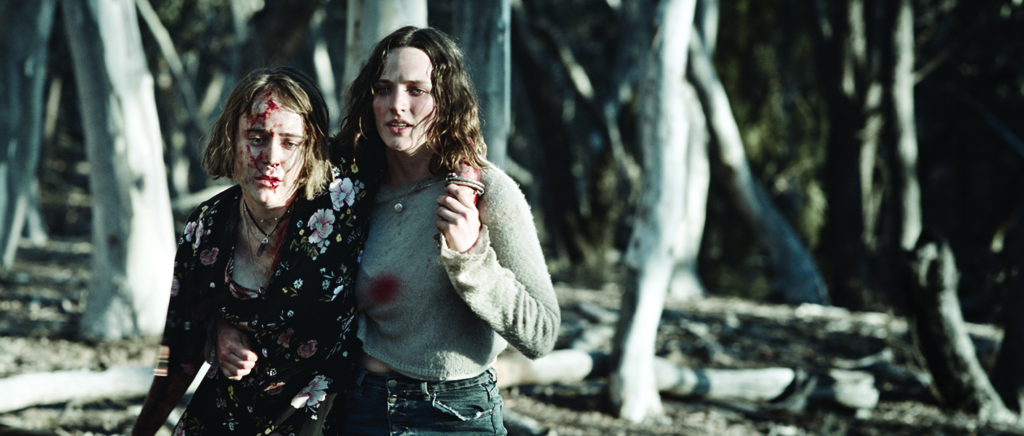
The stories of horror films, by the genre’s very nature, are subversive. Why do you think they’re so effective at confronting audiences with society’s woes?
TD: That’s a great question. It’s really in the DNA of the genre, isn’t it? Horror is reactionary; it’s always testing boundaries, pushing against taboos. And horror audiences actually want to be shocked and shaken up, as opposed to what audiences for other types of films will accept […] In horror films, anything can happen at any time. There’s a freedom to take risks, particularly at the low-budget end.
And did you have complete free rein? Did anyone ever question the violence or tell you to hold back a bit?
TD: I received feedback during the script process from Odin’s Eye and from the script consultant [Karel Segers], but I was pretty much [able] to do what I wanted. So, with the violence, there was never any question about going too far; they weren’t worried about that at all. I was given free rein in the edit as well.
Locations are crucial in creating a sense of dread and of being completely helpless, especially in remote settings. Could you tell us about your choice of locations in seeking to achieve this effect of psychological disorientation?
AM: Tony always envisioned a film in eerie forests of ghost gums and scrub, but, while searching for locations that would suit the film, we came across the old town of Bywong and immediately knew we had a location that would work perfectly […] Tony fully reworked another draft to use the best of that location, and, in consultation with our fabulous cinematographer, they were able to use the buildings and surroundings to their full potential.
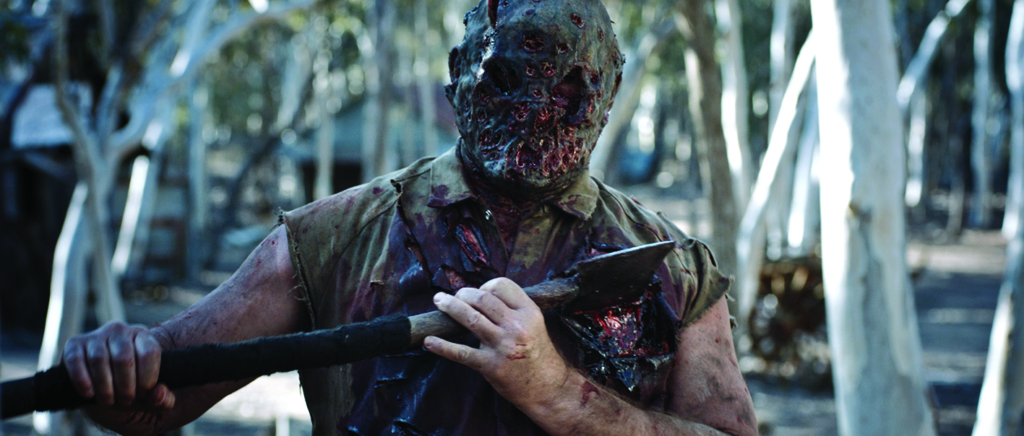
The film is not explicitly set in Australia; however, the accents remain Aussie, and there doesn’t appear to have been any effort to disguise them, which is kind of refreshing. Was that ever discussed?
AM: It was Tony’s vision to shoot a horror film in daylight using the otherworldliness of Australia’s natural bush. So, although we don’t ever make a reference to the events taking place in Australia, we don’t shy away from it, either. Australia has a rich history in the genre, both in the 1970s – from which The Furies draws much of its inspiration – as well as more recently. Horror is felt universally, regardless of location or accent, and so we played on the elements that were distinctly Australian, rather than hiding them or toning them down. We did, however, change a few lines of dialogue that might only be understood in Australian theatres!
The film doesn’t rest for energy. How were you able to maintain that breakneck pace for eighty-odd minutes?
TD: It was always written to be relentless and not leave the character or the audience any time to breathe. Once you start, you just run to the end, basically. I guess, in the end, I hadn’t realised how fast it was until I saw the final cut, but I did write it [to be] at that pace […] I think that unity of time and space is interesting in films as well, so [the story] all takes place in one day, running very fast with a nightmarish pace. Once the ball starts to roll down the hill, it doesn’t stop.
Endnotes
| 1 | Accelerator POD is a ‘market first’ development program run by Screen Canberra, international sales agent Odin’s Eye Entertainment and film studio The Film Distillery; filmmakers whose scripts are deemed commercially viable by Odin’s Eye are given the opportunity to work with The Film Distillery. See ‘Feature Film Produced by Canberra’s The Film Distillery Starts Production’, media release, The Film Distillery, 10 April 2018, available at <https://www.medianet.com.au/releases/157743/>, accessed 18 October 2019. |
|---|---|
| 2 | ‘The ‘Final Girl’ refers to the female character who, in cinematic works of horror, survives to the end of the film and confronts the antagonist; see Carol J Clover, Men, Women, and Chain Saws: Gender in the Modern Horror Film, Princeton University Press, Princeton, 1992. |
| 3 | Notably, Richards also lensed Mark Hartley’s 2013 remake of Richard Franklin’s Ozploitation horror classic Patrick (1978). |





